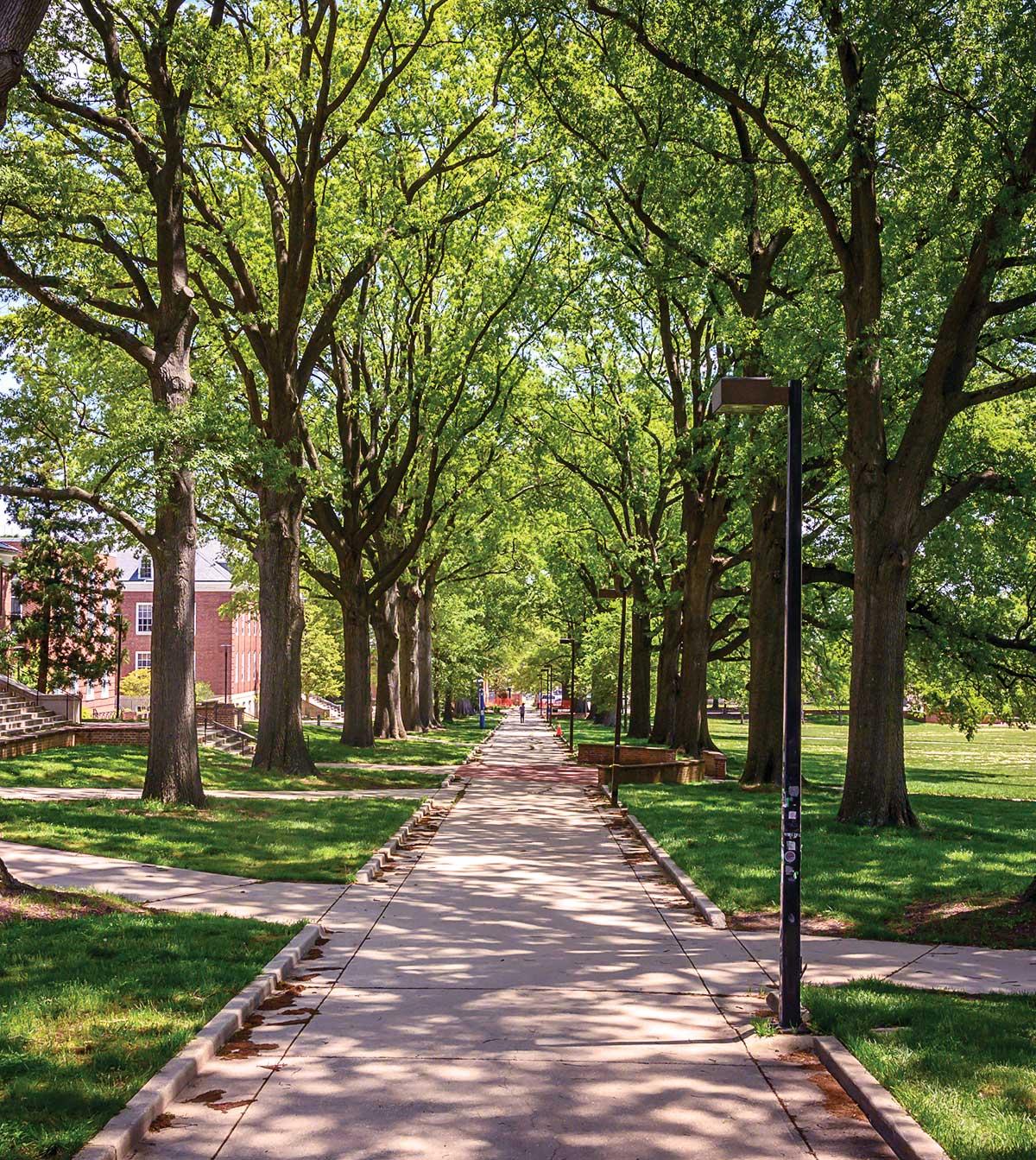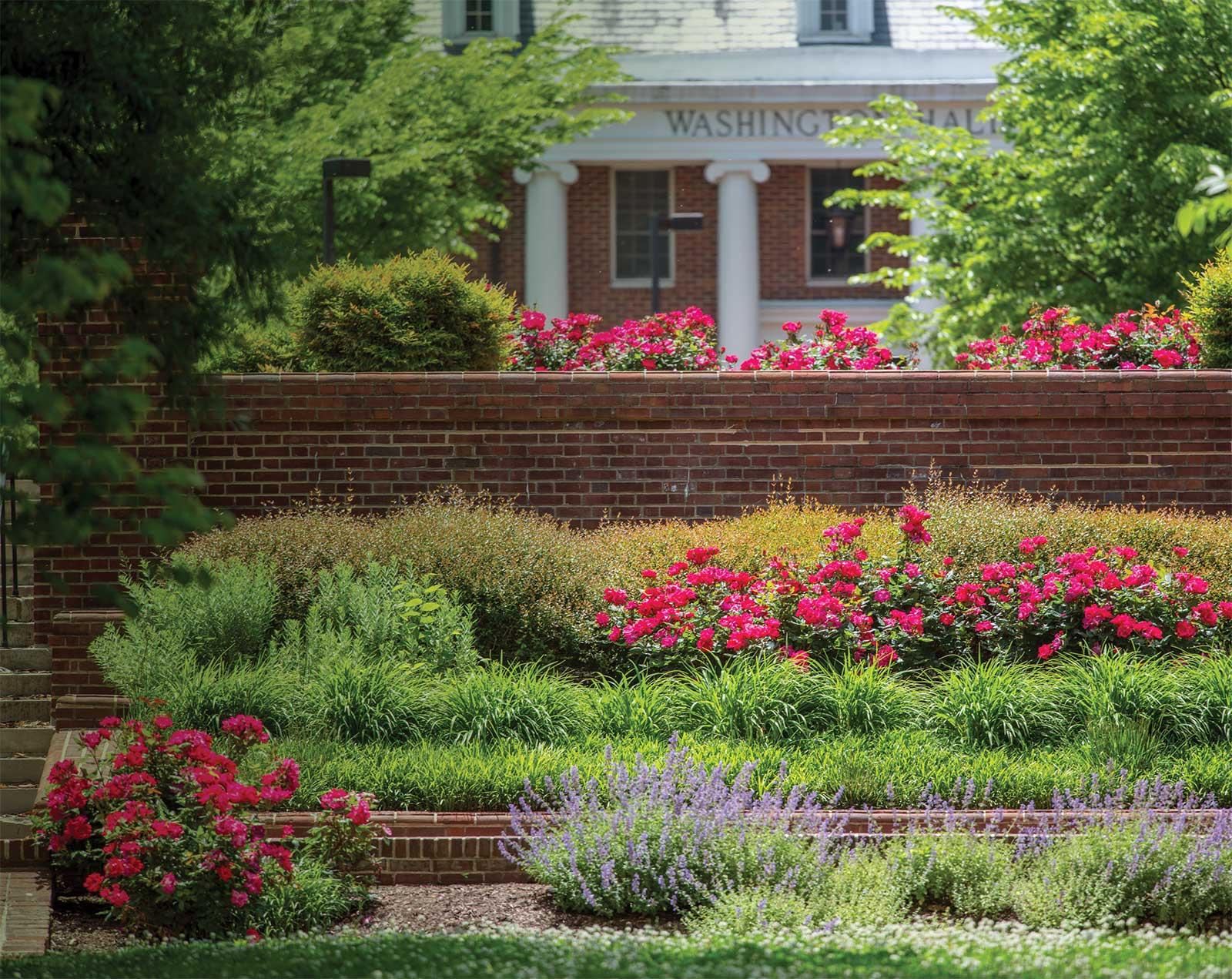The Transformative Power of Public Green Spaces
Image Credit: College of Agriculture and Natural Resources
The Transformative Power of Public Green Spaces
The past few months have forced us to take a deeper look at our own personal health, as well as the health of our society. With tensions running high from the COVID-19 pandemic, the healing power of nature and green space is an outlet that can provide release and mental clarity. AGNR assistant professor of Landscape Architecture, Naomi Sachs, takes this concept seriously and strives to show the many societal and health benefits of well-maintained and well-designed green spaces, especially in urban settings where “nature” may be harder to come by.
As a landscape architect, Sachs aims to create a greater connection between an individual and their natural environment through restorative and therapeutic landscapes via health-promoting design features. Her contributions to the field include co-authoring the book, Therapeutic Landscapes: An Evidence-Based Approach to Designing Healing Gardens and Restorative Outdoor Spaces.
“People are staying closer to home right now, so I try to encourage them to appreciate their nearby nature,”said Sachs. “Like a tree that is right outside your window but you never really noticed before. When we think of nature, we think of something that’s faraway and vast, but people don’t realize that nature is everywhere. And the spaces between urban buildings and natural settings is where a landscape architect can be vital.”

In fact, Sachs and colleagues at Cornell University found that as little as 10 minutes of leisure time experiencing nature can measurably improve your mental health in a recent study. With suicide rates on the rise and Americans reporting poor mental health during the COVID-19 pandemic, there has been a boom in research showcasing the positive health benefits of natural settings on mental and physical health markers. However, little work has been done to quantify the “dose” of nature you need to experience these effects. Sachs hopes to establish dosages to help revolutionize what a prescription to reduce stress and improve mental health can look like.
This is of particular importance to our student population. According to Healthline, mental illness and stress among college students are reportedly high, with recent reports showing up to 40% of students struggling with at least one diagnosable mental illness. Suicide is the second leading cause of death among college students, spurring on Sachs’ and AGNR’s commitment to programs like NatureRx that direct students to particularly beautiful natural settings around campus for stress relief and mental well-being. The Campus NatureRx Network consists of 20 colleges around North America, including UMD. At Cornell, health center practitioners are already prescribing time in nature as part of students’ electronic health records, and the goal is to do the same at UMD with our NatureRx@UMD program, led by Jennifer Roberts, assistant professor in the School of Public Health.
NatureRx@UMD is an initiative that emphasizes the benefits of the natural environment throughout and around the UMD campus in an effort to address the array of health and well-being issues faced by students and the greater campus community. The gains from NatureRx@UMD are both promising and endless.
Jennifer Roberts School of Public Health
Sachs said, “A landscape architect does not just put the ‘parsley around the meatloaf ’ of shrubbery around buildings, but can create strong connections between buildings, so they become roofless spaces like Hornbake Plaza or McKeldin Mall that are these powerful outdoor rooms. If a student can know that nature is good for them and has 10 minutes to go to lunch or get to class, they can choose to take a more nature-rich path and pay a little bit more attention to their surroundings to be in that natural experience and get the benefits. And that benefit is not just an emotional benefit, it is also a cognitive benefit that helps them perform better in class.”
UMD has many advantages as a green campus, including its distinction as a nationally recognized Arboretum & Botanical Garden. With UMD striving to maintain greenery among continued institutional growth, this research gives credence to initiatives like the AgroEcology Corridor. This multidisciplinary initiative spearheaded by AGNR and supported across the university reimagines UMD’s campus as a living-learning environment prioritizing interactive and educational green space. One of Sachs’ graduate students is designing a new therapeutic space for the AgroEcology Corridor.

In addition to this work, Sachs will continue to explore the many benefits of exposure to nature, including the potential immune-system boosting benefits. “This is the thing we are all so worried about right now, immunity, and nature has the potential to boost cytokines and NK cells (or natural killer cells) that help fight off infections and diseases. It’s this funny conundrum of wanting and knowing it is important to go outside, but feeling afraid because of potential viral transmission. But the more I learn, the less afraid I am to experience nature safely and get those benefits at this important time,” said Sachs.
In addition to green space having measurable effects on mental and physical health, Sachs and colleagues recently found that well-designed and maintained green spaces can potentially reduce gun violence and other violent crime, making communities and cities safer. In a time of high stress for the country, and amid national concerns about violent crime, gun violence, and racism, these findings have clear implications for public health and policy, as well as urban planning and development.
“All humans are entitled and have the right to spend time in ‘nature-made’ spaces,” said Roberts. Sachs added, “There is a huge amount of inequity when it comes to the distribution of parks in this country. And parks need to be not just parks, but healthy, well-maintained parks with many different types and levels of engagement, including nature engagement. Everyone has a right not just to nature, but to easily accessible and safe nature.”
Sachs strongly believes in the transformative power of green space. “A really great landscape architecture project will be beautiful, healthy for people and wildlife, will manage stormwater correctly and keep the Bay clean, and will even potentially help the regeneration of landscapes rather than just reducing harm. I’m interested in the connections between nature and happiness too, so not just looking at how nature makes the bad stuff less bad, but how nature can increase the good.”
Naomi Sachs
Landscape Architecture
There is a huge amount of inequity when it comes to the distribution of parks in this country...Everyone has a right not just to nature, but to easily accessible and safe nature. “